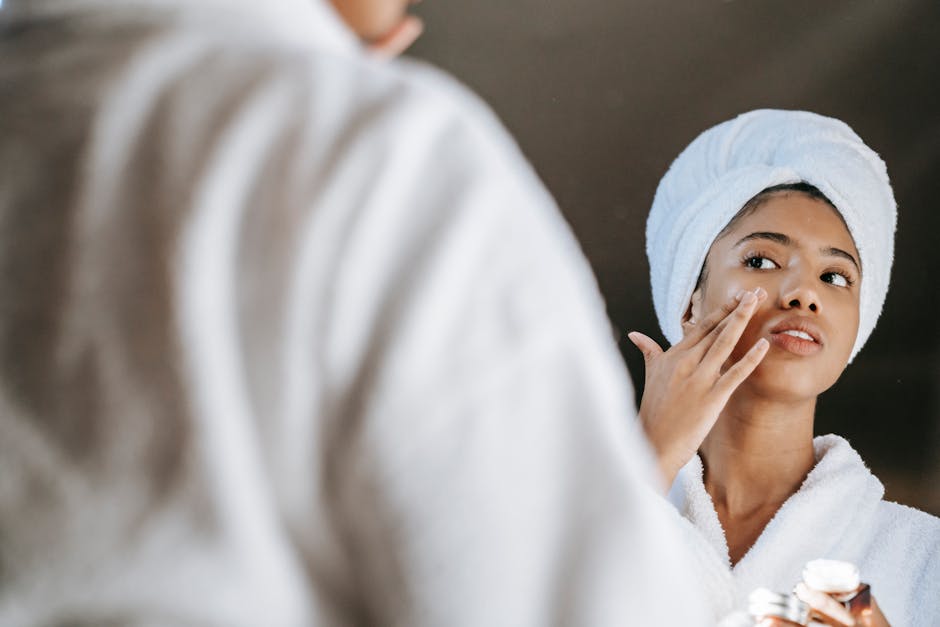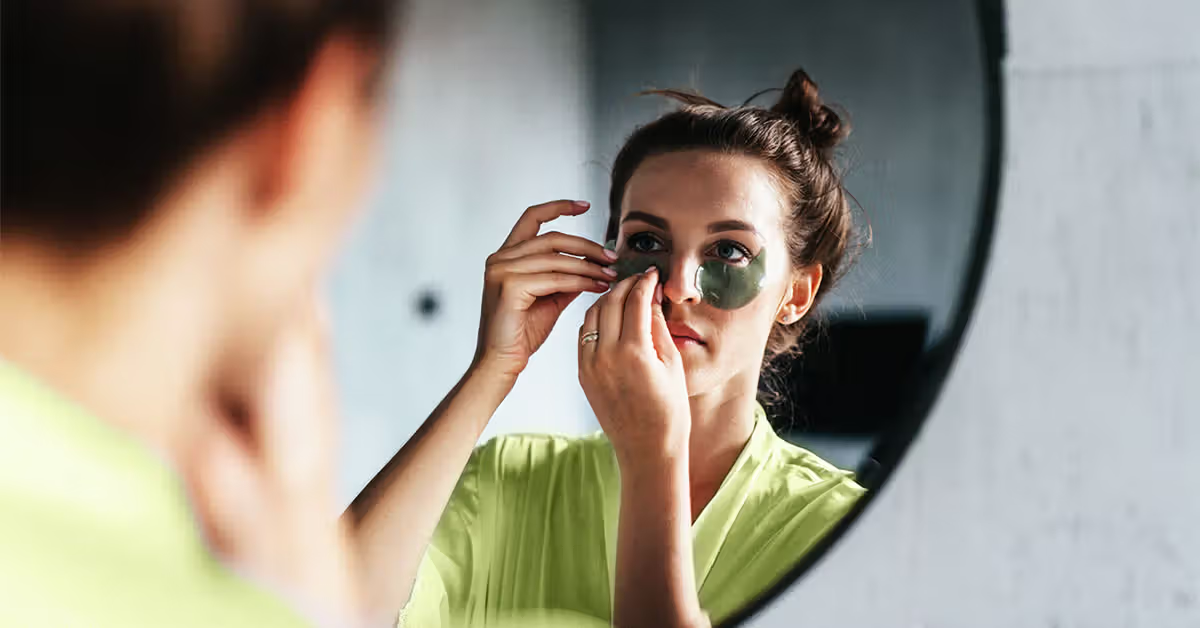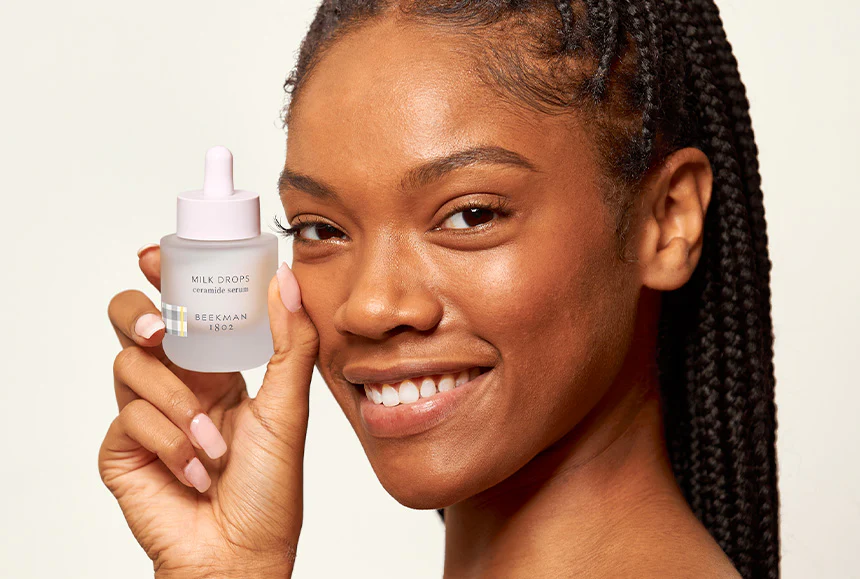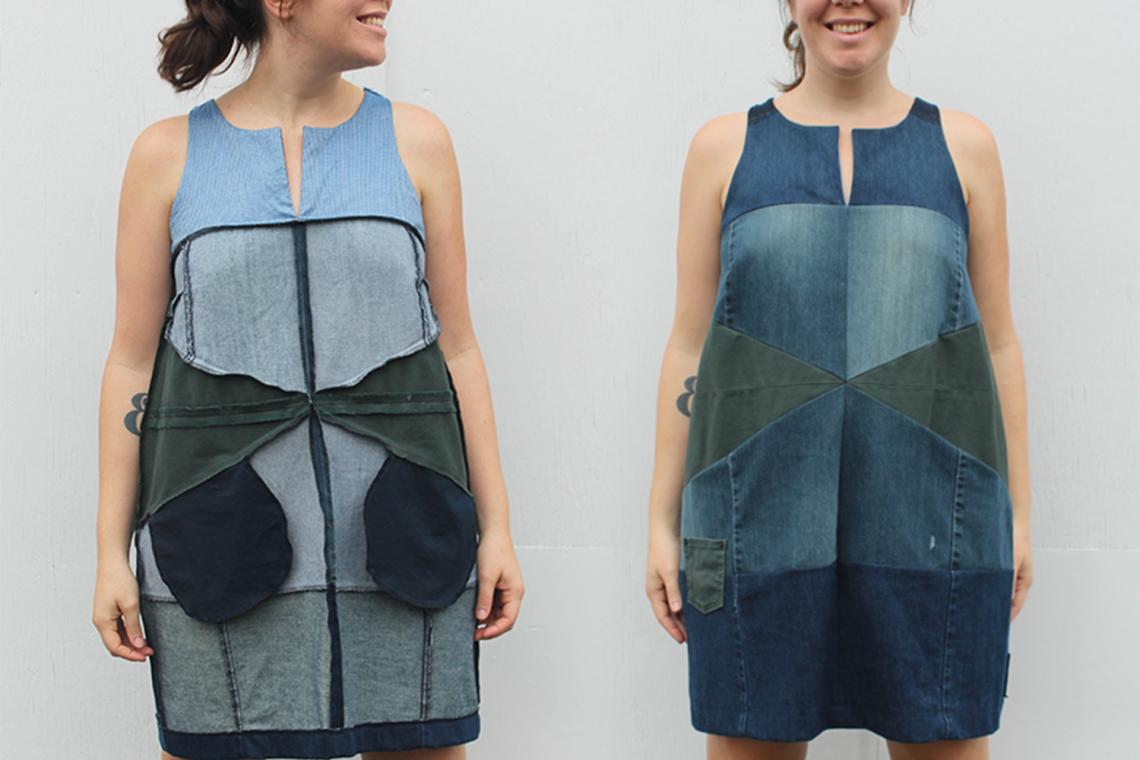Aging Naturally: The Science Behind Timeless Skin
Natural anti-aging solutions focus on evidence-based approaches that work with your body’s own renewal systems. For those seeking quick answers, here are the most effective natural ways to slow skin aging:
- Sun protection – 80% of skin aging comes from UV exposure
- Antioxidant-rich diet – colorful fruits and vegetables fight free radicals
- Hydration – both internal (water intake) and external (moisturizers)
- Topical vitamin C – stimulates collagen production
- Plant oils – rosehip, jojoba, and argan nourish and repair
- Adequate sleep – 7-8 hours allows cellular repair
- Stress management – meditation and yoga reduce cortisol damage
Aging is inevitable, but how we age is largely within our control. The quest for youthful skin doesn’t require expensive procedures or synthetic chemicals. Scientific research now confirms what traditional cultures have known for centuries: nature provides powerful tools for maintaining skin health.
When we understand why skin ages, we can take targeted steps to slow the process. Your skin’s appearance reflects both internal health and external care habits. A 2019 study found that women who ate more fruits had fewer wrinkles than those who consumed more meat and processed foods.
The beauty industry often complicates what should be simple. As Dr. Nima Gharavi’s research shows, many plant compounds directly address inflammation—a key driver of premature aging. The most effective approach combines nutrition, topical botanicals, and lifestyle practices that work synergistically.
Aging gracefully isn’t about looking 25 forever. It’s about supporting your skin’s natural functions so it remains healthy, resilient and radiant at every stage of life.

Understanding Why Skin Ages
Ever looked in the mirror and wondered where those little lines came from? To effectively fight aging, we need to understand what’s happening beneath your skin’s surface. It’s not just about what we see—it’s about the fascinating biology happening in every layer of your skin.
Your skin’s most visible aging signs—those pesky wrinkles—come from the gradual breakdown of collagen and elastin. These proteins are like your skin’s internal scaffolding, keeping everything firm and bouncy. After you hit 20, your body produces about 1% less collagen each year. By your 40s and 50s, this loss becomes impossible to ignore as lines, wrinkles, and sagging make their appearance.
Oxidative stress is like rust forming on your skin cells. When free radicals (those unstable troublemaker molecules) outnumber your body’s natural antioxidants, they damage your cellular structures and DNA, fast-tracking the aging process.
Then there’s glycation—a process you might not have heard about. This happens when excess sugar molecules attach to proteins like collagen, forming what scientists call advanced glycation end products (AGEs). These make your skin stiff and less resilient—one big reason why high-sugar diets often lead to dull, prematurely aged skin.
Intrinsic vs. Extrinsic Factors
Your skin ages in two main ways:
Intrinsic aging is your skin’s natural biological clock—it’s programmed into your genes and happens regardless of your environment. Think of it as the baseline aging you’d experience even if you lived in a perfect bubble.
Extrinsic aging comes from the outside world and your lifestyle choices. According to dermatologists, these external factors account for a whopping 90% of visible skin aging. The good news? This means much of skin aging is within your control!
“Many things cause our skin to age. Some things we cannot change—like genetics—but by adjusting our environment and lifestyle choices, we can slow down premature aging,” notes the American Academy of Dermatology.
How Wrinkles Form
Those lines on your face have quite the origin story:
Your collagen and elastin breakdown is like losing the mattress springs in your skin—everything starts to sag when this supportive framework diminishes.
Matrix metalloproteinases (MMPs) might sound like something from a sci-fi movie, but they’re actually enzymes that break down collagen. They become more active with age and UV exposure. Research shows that 80% of skin aging comes from sun exposure, which triggers these MMPs to work overtime.
Those repetitive facial movements you make—smiling, frowning, squinting—eventually create permanent paths in your skin. What starts as temporary expressions gradually becomes etched into your face.
Your skin’s cell turnover slows dramatically too. Young skin refreshes itself every 28 days, but as you age, this process drags to 45-60 days, leaving you with duller, less radiant skin.
The loss of subcutaneous fat beneath your skin creates a thinner, more angular appearance—like slowly deflating a balloon.
Understanding these mechanisms helps us target Natural anti-aging solutions more effectively. When you know what’s happening beneath the surface, you can choose remedies that actually work—addressing both prevention and reversal of those telltale signs of aging.
The beauty of knowledge? It empowers you to make choices that support your skin’s health at every age.
Sun Exposure & Photoaging – The #1 Enemy

When it comes to keeping your skin youthful, nothing deserves your attention more than sun protection. Let’s face it – that golden tan might look good today, but it comes with a hefty price tag for tomorrow’s skin. A eye-opening 2013 study in Clinical, Cosmetic and Investigational Dermatology revealed something that changed how we think about aging: UV radiation is responsible for a whopping 80% of visible facial aging.
Photoaging (sun-induced aging) looks quite different from natural aging. Instead of the gentle, even changes that come with time, sun damage creates uneven skin tone with frustrating age spots. It etches deeper, earlier wrinkles into your face. Perhaps most disappointingly, it breaks down your skin’s elastin fibers, leading to that dreaded sagging effect. The sun literally restructures your skin, thickening the outer layer while thinning the supportive dermis beneath.
Your skin faces a three-pronged attack from the sun:
UVA rays are the silent agers. Think “A” for Aging – these sneaky rays penetrate deeply into your skin, creating damaging free radicals that break down your precious collagen and elastin. What makes them particularly tricky is that they pass through windows and clouds, affecting your skin even when you’re driving or on cloudy days.
UVB rays are the ones that remind you immediately that you’ve had too much sun. Think “B” for Burning – they damage your skin’s surface, causing painful sunburns and playing a major role in skin cancer development.
Infrared radiation is the newcomer to our understanding of skin damage. This heat-generating radiation triggers inflammation in your skin, accelerating the aging process in ways we’re still finding through scientific research on sun damage.
Here’s a fascinating bit of proof: a 2008 clinical study had participants apply topical vitamin C to just one side of their face. The results? Significantly reduced sun damage and fewer wrinkles on the treated side compared to the untreated side. This shows both how damaging sun exposure can be and how protective the right ingredients can be.
According to dermatologists, the most effective natural anti-aging solution for sun protection requires a four-part approach:
- Seeking shade during peak hours (10 a.m. to 2 p.m.)
- Wearing protective clothing (look for UPF labels)
- Applying broad-spectrum, water-resistant SPF 30+ sunscreen daily
- Reapplying sunscreen every two hours when outdoors
For those of us committed to clean beauty principles, natural mineral sunscreens containing zinc oxide or titanium dioxide offer physical protection by reflecting UV rays rather than absorbing them like chemical alternatives. These gentle options typically work better for sensitive skin while aligning with the holistic approach we value at Beyond Beauty Lab.
Melanin (your skin’s natural pigment) provides some protection, but even darker skin tones need daily sun protection to prevent premature aging and hyperpigmentation. Making sun protection a non-negotiable part of your daily routine isn’t vanity – it’s the single most effective step you can take for lifelong skin health.
Natural Anti-Aging Solutions: Core Principles
The journey to ageless skin starts with simple daily habits that support your body’s natural renewal processes. These aren’t quick fixes—they’re lifestyle foundations that create lasting change from the inside out.
Natural Anti-Aging Solutions & Lifestyle
The choices we make each day write themselves on our skin over time. Science has revealed some powerful connections between how we live and how we age:
That Mediterranean vacation might do more than just relax you—it could transform your skin! People who accept a Mediterranean diet rich in olive oil, colorful vegetables, fresh fruits, and legumes develop fewer wrinkles than those loading up on meat, dairy, and processed foods. This isn’t just about avoiding “bad” foods—it’s about flooding your body with skin-supporting nutrients that fight inflammation and oxidative damage.
“What you eat becomes your skin,” as dermatologist Dr. Jessica Wu wisely puts it. Those omega-3 fatty acids, polyphenols, and carotenoids in Mediterranean foods aren’t just good for your heart—they’re building stronger skin cell membranes and creating your personal shield against UV damage.
Have you tried giving your digestion a break? Intermittent fasting is showing fascinating anti-aging potential. When we temporarily restrict calories, our bodies activate cellular repair mechanisms and dampen inflammation. A breakthrough 2019 study found that fasting periods boost production of β-hydroxybutyrate—a compound that activates the FOXO3 gene associated with living longer, healthier lives.
And don’t underestimate the power of a deep breath. Mindful breathing and stress reduction practices counteract the skin-damaging effects of cortisol (that pesky stress hormone that breaks down collagen). Remarkably, regular meditators in a 2021 study reduced their biological age markers by an average of 3.2 years in just 8 weeks!
At Beyond Beauty Lab, we’ve seen the difference even small changes make. Try adding just one stress-melting practice to your day—a 10-minute meditation, gentle yoga flow, or simply five deep breaths before each meal. Your skin will thank you.
Natural Anti-Aging Solutions & Hydration

The fountain of youth might be simpler than we thought—water plays a crucial role in keeping skin plump, radiant and youthful:
Your skin is about 64% water, which explains why proper water intake makes such a visible difference. While “8 glasses a day” isn’t a perfect rule for everyone, adequate hydration ensures your cells function optimally and flush away toxins effectively. The National Academy of Medicine suggests women aim for about 91 ounces (2.7 liters) of total water daily, while men need around 125 ounces (3.7 liters)—including water from all beverages and moisture-rich foods.
Have you heard about nature’s moisture magnet? Hyaluronic acid naturally occurs in your skin and can hold up to 1,000 times its weight in water—imagine a molecular sponge keeping your skin cells plump and hydrated. As we age, our natural hyaluronic acid decreases, leaving skin drier with more visible wrinkles. Topical products with this ingredient help restore what time takes away.
Don’t forget the tiny heroes of hydration—electrolytes like potassium, sodium, and magnesium help regulate fluid balance within cells. Including coconut water, bananas, and leafy greens in your diet supports hydration at the cellular level where it matters most.
Natural anti-aging solutions often come from surprisingly simple sources. A compelling 2015 study found that applying aloe vera gel significantly reduced wrinkles while boosting both collagen production and hydration. This shows how nature’s ingredients can deliver measurable, visible benefits without harsh chemicals or complex formulations.
Super-Nutrients & Antioxidants That Turn Back the Clock
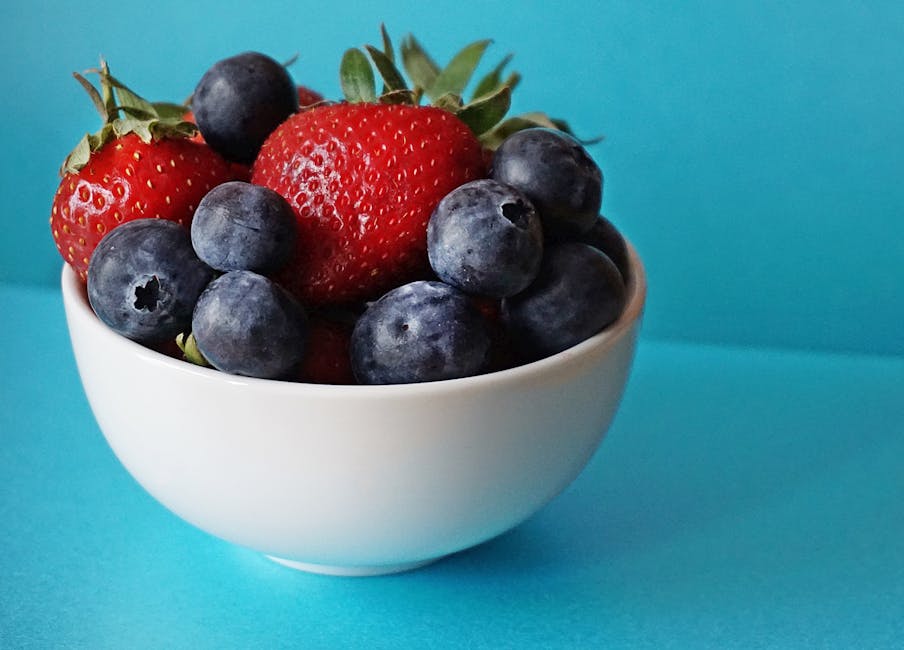
Mother Nature has gifted us with incredible compounds that fight aging right at the cellular level. I like to think of these nutrients as your skin’s personal bodyguards, working together to protect and repair:
Vitamin C isn’t just for fighting colds! This powerful antioxidant is essential for making collagen (your skin’s support structure) and brightens skin while fading dark spots. A fascinating 2008 study showed that applying vitamin C gel visibly improved wrinkles and sun damage. Your skin literally drinks it up!
Have you heard about vitamin A/retinol? It’s often called the anti-aging superstar, and for good reason. It speeds up cell turnover (out with the old, in with the new!) and boosts collagen production. If you prefer natural options, look for bakuchiol (from the babchi plant) – studies show it works similarly to synthetic retinoids but with less irritation. Your sensitive skin will thank you!
Vitamin E is like vitamin C’s best friend – these two work better together! This fat-soluble antioxidant protects your cell membranes and research shows it’s particularly good at preventing UV damage when applied before sun exposure. Talk about teamwork!
I’m personally fascinated by omega-3 fatty acids and their age-defying powers. These essential fats strengthen cell membranes and calm inflammation. A groundbreaking study recently found that taking just 1 gram of omega-3 daily over three years slowed biological aging by up to four months! That’s like turning back the clock with your fork.
Don’t overlook zinc in your anti-aging toolkit. This mineral is crucial for cell division, protein synthesis, and immune function – all essential for skin repair. You can find it in pumpkin seeds, oysters, and beans. Your skin needs these building blocks to stay youthful!
The colorful pigments in fruits and vegetables aren’t just pretty – those polyphenols pack a powerful anti-aging punch. Green tea, berries, and yes, even dark chocolate contain these plant compounds that fight inflammation. Resveratrol (found in grapes and berries) has been shown to activate sirtuin genes associated with longevity. Who knew that eating the rainbow could help you age more gracefully?
How Antioxidants Protect Collagen
Think of antioxidants as your skin’s personal bodyguards against premature aging. They work tirelessly by:
Neutralizing free radicals before they can damage skin cells and collagen fibers – like diffusing little molecular bombs before they explode
Calming inflammation that triggers collagen-destroying enzymes – putting out the fire before it spreads
Supporting your body’s built-in antioxidant systems like glutathione – reinforcing your natural defenses
Creating a shield against UV damage that accelerates collagen breakdown – like applying invisible armor
I was amazed to learn that research in the Journal of Dermatological Science found antioxidants can prevent up to 80% of collagen degradation caused by UV exposure when applied before sun exposure. That’s why at Beyond Beauty Lab, we always recommend applying antioxidant serums before heading outdoors!
Spotlight on Vitamins C, A & E
These three vitamins form the holy trinity of natural anti-aging solutions:
Vitamin C (Ascorbic Acid) is like your skin’s personal cheerleader for collagen production. Aim for 75-90mg daily (up to 2,000mg is safe). You’ll find it abundantly in citrus fruits, strawberries, bell peppers, and broccoli. One challenge: vitamin C is a bit of a diva and oxidizes quickly when exposed to air and light. My personal tip? Look for vitamin C products in opaque, airless containers and replace them every six months for maximum potency.
Vitamin A (Retinoids) works like your skin’s personal trainer, encouraging cells to turn over and renew. Beta-carotene (which your body converts to vitamin A) comes from colorful foods like sweet potatoes, carrots, spinach, and mangoes. If you’re new to retinoids or have sensitive skin, start with gentle natural alternatives like bakuchiol. A helpful hint: apply at night and always use sunscreen during the day to protect your fresh new skin cells.
Vitamin E (Tocopherols) serves as your skin’s protective shield. Aim for about 15mg daily from sunflower seeds, almonds, avocados, and spinach. Here’s something cool: vitamin E works best when paired with vitamin C – they’re better together! For the best protection, look for products containing both tocopherols and tocotrienols (different forms of vitamin E).
A 2016 study in the Journal of Cosmetic Dermatology revealed something remarkable: combining vitamins C, E, and ferulic acid provided 8 times more photoprotection than vitamin C alone. That’s the power of teamwork! This is why many of the most effective natural anti-aging solutions contain multiple antioxidants rather than single ingredients.
Consistency is key with these nutrients. Your skin renews itself approximately every 28 days, so give these natural solutions time to work their magic. Your future self will thank you!
Evidence-Backed Natural Topicals & DIY Remedies
Mother Nature’s medicine cabinet offers some truly remarkable skin solutions – and now science is catching up with what traditional healers have known for generations. Let’s explore some of the most effective natural ingredients you can apply directly to your skin.
Aloe Vera isn’t just for sunburns! A fascinating 2009 study finded that taking a daily aloe vera gel supplement significantly reduced wrinkles in just 90 days. When applied topically, this succulent superstar calms inflammation while delivering deep hydration. I keep an aloe plant in my kitchen for fresh gel whenever my skin needs extra TLC.
Ever considered a banana mask? This kitchen staple is packed with potassium, vitamins, and natural moisture. Creating one couldn’t be simpler: mash a quarter of a ripe banana into a smooth paste, apply to clean skin for 15-20 minutes, then rinse off. The natural enzymes gently exfoliate while potassium hydrates thirsty skin cells. My Sunday self-care routine wouldn’t be complete without this fruity treat for my face!
Here’s a surprising one – egg membrane! That thin film inside an eggshell contains collagen, hyaluronic acid, and growth factors that support skin renewal. A 2016 study confirmed that creams containing egg membrane significantly reduced wrinkle depth and boosted collagen production. Who knew breakfast could be so beautifying?
Your morning cup of green tea doubles as skin protection. Rich in EGCG (epigallocatechin gallate), this antioxidant powerhouse shields against UV damage and calms inflammation. Research shows benefits from both drinking green tea and applying it topically. I love refrigerating leftover tea in a spray bottle for a refreshing afternoon skin mist.
Niacinamide (vitamin B3) is a true multitasker, reducing dark spots, strengthening your skin barrier, and improving elasticity. A 2004 study showed impressive results: a 5% niacinamide moisturizer significantly improved fine lines and wrinkles after just 12 weeks of use. It’s particularly wonderful for sensitive skin that can’t tolerate stronger ingredients like retinol.
Proven Herbal & Plant Extracts

The plant kingdom offers a treasure trove of anti-aging compounds that rival their synthetic counterparts:
Rosehip Oil deserves its “nature’s retinol” nickname. Brimming with vitamins A and C, this golden oil improves skin elasticity and fades dark spots. A 2015 study confirmed it significantly improved crow’s feet wrinkles after just eight weeks. I’ve found it particularly effective during winter months when my skin needs extra nourishment.
If retinol irritates your skin, bakuchiol might be your new best friend. This gentle plant extract delivers retinol-like benefits without the redness and peeling. A groundbreaking 2018 study in the British Journal of Dermatology found bakuchiol equally effective at improving wrinkles and pigmentation, but with significantly fewer side effects than retinol.
Wine lovers will appreciate that resveratrol (found in grape skins and red wine) activates longevity genes called sirtuins. Applied topically, it shields against UV damage and improves skin elasticity. Consider it permission to enjoy that occasional glass of red wine—for your skin health, of course!
Centella Asiatica (also called Gotu Kola) has been used in traditional Chinese and Ayurvedic medicine for centuries. This remarkable herb stimulates collagen synthesis, improves circulation, strengthens skin, reduces scarring, and improves elasticity. It’s especially beneficial for sensitive or redness-prone complexions.
Sea Buckthorn Oil might stain your pillowcase orange, but the results are worth it! Exceptionally rich in rare omega-7 fatty acids, this vibrant oil strengthens cell membranes and accelerates tissue regeneration. Research confirms it significantly improves skin hydration and elasticity with consistent use.
At Beyond Beauty Lab, we’re passionate about these botanical ingredients when they’re properly formulated and sustainably sourced. The key is distinguishing between plant extracts with solid scientific backing versus those with only traditional claims.
Natural vs. Synthetic Wrinkle Creams
| Aspect | Natural Anti-Aging Products | Synthetic Anti-Aging Products |
|---|---|---|
| Efficacy | Moderate results with consistent use; gentler action | Often faster visible results; stronger action |
| Side Effects | Typically fewer irritations; suitable for sensitive skin | Higher potential for irritation, redness, peeling |
| Cost | Variable; quality natural ingredients can be expensive | Generally more expensive for patented compounds |
| Sustainability | Often more environmentally friendly | May involve chemical processing with environmental impact |
| Long-term Safety | Generally recognized as safe with long history of use | Newer synthetic compounds may have unknown long-term effects |
If you’re wondering whether natural products can truly compete with their lab-created counterparts, consider this: a 2017 comparative study found that natural formulations containing bakuchiol, niacinamide, and botanical antioxidants produced 83% of the anti-wrinkle effects of prescription retinoids after 12 weeks, with significantly fewer side effects. Nature packs quite a punch when the right ingredients are combined!
The beauty of natural anti-aging solutions is that many can be found right in your kitchen or garden. They offer effective alternatives for those seeking clean beauty options without harsh chemicals or irritating ingredients. Start with one or two that address your specific concerns, and give your skin time to respond – natural ingredients work harmoniously with your body’s processes rather than forcing dramatic overnight changes.
Essential Oils, Massage & Facial Exercises
There’s something deeply nurturing about incorporating touch into your skincare routine. Beyond creams and serums, physical techniques offer powerful natural anti-aging solutions that work from the outside in.
Imagine ending your day with a soothing facial massage using a few drops of frankincense essential oil diluted in jojoba oil. It’s not just relaxing—it’s scientifically beneficial. Frankincense contains boswellic acids that research shows can reduce inflammation and improve skin elasticity. A fascinating 2017 study found that regular use in a facial serum visibly diminished fine lines.
Geranium essential oil deserves a place in your natural toolkit too. Rich in protective antioxidants, it boosts circulation and encourages cell renewal when properly diluted. I’ve found it particularly uplifting during my evening skincare ritual—both for its skin benefits and its gentle, mood-enhancing scent.
A word of caution: Always respect the potency of essential oils. Dilute them properly (about 6-12 drops per ounce of carrier oil) and perform a patch test before applying to your entire face. Your skin deserves this care and attention.
Massage Devices & Collagen Stimulation
Have you noticed the rise of facial tools in recent years? There’s good reason for their popularity. Traditional techniques like gua sha—gently scraping the skin with a smooth stone tool—have gained scientific backing. A 2018 study confirmed what practitioners have known for centuries: regular facial gua sha improves elasticity by increasing blood flow to facial tissues.
Acupressure offers similar benefits without any special equipment. By applying gentle pressure to specific points around your eyes, mouth, and forehead, you can improve muscle tone and circulation. Many of my clients report their skin feels firmer after incorporating even a simple 3-minute acupressure routine into their mornings.
The science behind these techniques is compelling. Researchers found that combining facial massage with anti-aging products for 8 weeks improved wrinkles, sagging, and texture significantly more than using products alone. The massage not only helped products penetrate more effectively but actually stimulated the fibroblast cells responsible for collagen production.
Modern technology builds on these ancient wisdom traditions. Microcurrent devices deliver tiny electrical currents that mimic your body’s natural signals, essentially “re-educating” facial muscles and boosting ATP (cellular energy) production. The results? Improved facial contour and fewer wrinkles with consistent use.
Even simple tools like jade rollers offer benefits beyond their Instagram appeal. They cool the skin, reduce morning puffiness, and help serums absorb more effectively. When used with intention—always rolling upward and outward—they support lymphatic drainage and reduce inflammation.
The key to success isn’t having the fanciest tool, but consistency in your practice. A revealing 2018 study found that just 5 minutes of facial massage twice daily led to measurable improvements in skin firmness after 8 weeks. At Beyond Beauty Lab, we believe these hands-on approaches complement clean beauty products perfectly, offering a holistic approach to aging gracefully.
Gut Health, Probiotics & the Skin Connection

Remember when we thought skincare was just about what we put on our faces? Those days are long gone! One of the most fascinating breakthroughs in anti-aging research is what scientists now call the “gut-skin axis”—the remarkable connection between our digestive health and our skin’s appearance.
Think of your gut as the control center for your skin’s health. The trillions of bacteria living in your digestive system (your microbiome) don’t just help you digest food—they’re constantly communicating with your skin. When these gut bacteria fall out of balance, one of the first places it shows up is your face, usually as inflammation—and inflammation is aging’s best friend.
“The skin is like a mirror reflecting what’s happening inside your body,” explains Dr. Whitney Bowe, dermatologist and author of The Beauty of Dirty Skin. “When your gut microbiome is balanced, your skin glows. When it’s not, your skin suffers.”
Research published in the Journal of Dermatological Science revealed that certain probiotic strains work as powerful natural anti-aging solutions by strengthening your skin barrier, reducing inflammation, protecting against UV damage, and improving hydration and elasticity. It’s like having tiny skincare specialists working from the inside out!
So how can you harness this gut-skin connection? The answer might be sitting in your refrigerator right now.
Yogurt with live cultures deserves a spot in your beauty routine as much as your breakfast bowl. It contains Lactobacillus and Bifidobacterium strains that visibly improve skin function. A compelling 2020 study found women who enjoyed probiotic yogurt daily for just 12 weeks showed measurably better skin elasticity and hydration compared to those who didn’t.
Love pickled foods? Your complexion does too! Fermented vegetables like kimchi and sauerkraut deliver diverse bacterial strains along with prebiotic fiber that nourishes your beneficial gut bacteria. This double-action approach helps reduce inflammation that leads to premature aging.
That tangy kombucha you might sip for its refreshing taste is also delivering organic acids and antioxidants that support detoxification and gut health. These compounds help neutralize free radicals that would otherwise damage your skin cells.
The gut-skin connection doesn’t stop with what you eat. Innovative skincare brands are now developing topical probiotics that work directly on your skin’s surface. These beneficial bacteria create a protective shield by crowding out harmful microbes, reducing inflammation, strengthening your skin’s natural barrier, and improving hydration.
A particularly illuminating 2016 study in the International Journal of Women’s Dermatology found that participants over 55 who used both oral and topical probiotics experienced improved skin elasticity, better barrier function, and reduced wrinkle depth. The researchers noted that the combination approach—addressing the gut-skin axis from both directions—produced the most dramatic results.
At Beyond Beauty Lab, we believe this inside-out approach represents the future of skincare. While fancy creams have their place, true change begins with nurturing your body’s internal ecosystems. Your most radiant skin might be just a few fermented foods away!
Safe & Natural Sun Protection Practices
Since UV exposure accounts for up to 80% of visible aging, effective sun protection is your most powerful natural anti-aging solution. Instead of relying solely on products, a comprehensive approach works best.
Timing outdoor activities makes a tremendous difference in UV exposure. The sun’s rays are most intense between 10 a.m. and 4 p.m., so planning your outdoor time for early morning or late afternoon significantly reduces damage. I love walking my dog at sunrise – not only is it peaceful, but my skin thanks me later!
Your wardrobe choices matter tremendously for skin protection. Protective clothing with UPF ratings provides reliable physical barriers without any chemicals. While basic unbleached cotton offers minimal protection (about UPF 5-8), specialized sun-protective fabrics can shield you equivalent to SPF 50+. A wide-brimmed hat and quality UV-blocking sunglasses complete your sun-smart ensemble.
When it comes to topical protection, mineral sunscreens containing zinc oxide and titanium dioxide create a physical barrier that reflects harmful rays. Unlike chemical sunscreens that absorb into your skin, these minerals sit on the surface – making them ideal for sensitive skin types. At Beyond Beauty Lab, we recommend non-nano formulations for the safest option.
What you eat can actually boost your skin’s natural sun resistance through internal photoprotection. Certain foods contain compounds that help from the inside out:
- Tomatoes contain lycopene that strengthens skin’s natural defenses
- Wild salmon provides astaxanthin, a powerful antioxidant
- Green tea offers protective catechins
- Dark chocolate (yes, chocolate!) contains flavanols that improve skin’s resilience
A fascinating 2017 study in the Journal of Investigative Dermatology revealed that people who consumed tomato paste daily for just 12 weeks showed 33% more protection against sunburn compared to those who didn’t. While this internal protection doesn’t replace sunscreen, it provides a valuable additional layer of defense.
We believe in approaching sun protection holistically – building internal resilience through diet, creating physical barriers with proper clothing, and applying quality mineral sunscreens for complete coverage. This three-pronged approach gives your skin the best chance to stay youthful for decades to come.

Frequently Asked Questions about Natural Anti-Aging Solutions
When should I start a natural anti-aging routine?
The perfect time to begin your anti-aging journey is in your 20s, with a strong focus on prevention—especially sun protection and antioxidant-rich skincare. That said, it’s truly never too late to accept natural anti-aging solutions and see meaningful improvements.
As one dermatologist we interviewed explained: “You’re never too young or old to see benefits. Even those with existing damage can see improvements by improving sun protection and lifestyle habits.”
Your skincare needs naturally evolve with time. In your 30s, consider incorporating more targeted ingredients like vitamin C serums and gentle retinol alternatives like bakuchiol. When you reach your 40s and beyond, your skin will thank you for adding more intensive hydration, peptides, and regular facial massage techniques to your routine.
The beauty of natural approaches is that they support your skin’s health at any age, working with your body’s own renewal systems rather than fighting against them.
How long until I see visible results?
Patience is part of the natural beauty journey—different approaches yield results on different timelines:
Your skin will show hydration improvements almost immediately, often within just a few days of consistent moisturizing. Dietary changes take a bit longer, typically showing noticeable skin improvements after 4-6 weeks as your cells regenerate.
Topical treatments like vitamin C brighten skin in about 3-4 weeks, while natural retinol alternatives need 8-12 weeks to show significant wrinkle reduction. The deeper structural improvements from collagen-building ingredients require at least 12 weeks of faithful application.
Consistency truly is the key to success. A fascinating 2015 study found that participants using daily aloe vera treatments saw significant wrinkle reduction—but only after 90 days of consistent use.
As a good rule of thumb, give any natural anti-aging solution about three months of regular use before evaluating its effectiveness. Even when you can’t see dramatic visible results, these natural approaches are working behind the scenes to prevent future damage—and prevention is always easier than reversal.
When is it time to consult a dermatologist?
While natural approaches effectively address most normal aging concerns, certain situations call for professional expertise:
Sudden skin changes deserve immediate attention, especially unexpected shifts in skin texture, color, or moles that could signal more serious conditions. Similarly, persistent rashes or irritation that don’t respond to gentle care might indicate underlying issues that need medical treatment.
If deep wrinkles or volume loss significantly impact your confidence, a dermatologist can recommend complementary treatments that work alongside your natural routine. Challenging skin conditions like rosacea, eczema, or adult acne often require specialized care, especially when they interfere with your anti-aging efforts.
Finally, if you don’t see improvements after three months of consistent natural care, professional guidance can help identify what might be missing from your approach.
A board-certified dermatologist brings valuable expertise to your skincare journey, offering personalized advice based on your unique skin needs and goals. Many integrate both natural and clinical approaches for optimal results, helping you create a balanced routine that honors your preference for natural solutions while addressing specific concerns.
At Beyond Beauty Lab, we believe in the power of informed choices—understanding when self-care is sufficient and when professional guidance can help you achieve your healthiest, most radiant skin.
Conclusion
Embracing natural anti-aging solutions isn’t just about chasing youth—it’s about nurturing your skin’s health for a lifetime of radiance. The science speaks for itself: the most powerful approach combines consistent sun protection, nutrient-dense foods, proper hydration, evidence-backed natural ingredients, and mindful stress management.
Here at Beyond Beauty Lab, we believe true beauty emerges from balance—honoring your body’s innate wisdom while providing the support it needs to flourish. The most effective anti-aging strategy isn’t hiding in a single miracle product but in the daily rhythm of skin-loving habits that become second nature.
When I reflect on what really makes skin age beautifully, it always comes back to these fundamentals:
Protecting your skin from the sun becomes your daily non-negotiable. Feeding your complexion from within with colorful, antioxidant-rich foods creates your internal defense system. Staying hydrated—both through water intake and moisture-preserving skincare—maintains that coveted plumpness we associate with youth. Choosing evidence-backed natural ingredients like vitamin C, bakuchiol, and botanical oils gives your skin exactly what it needs without unnecessary fillers or irritants.
Don’t forget to nurture your skin’s microbiome—those beneficial bacteria that maintain your skin’s delicate balance. And perhaps most overlooked: managing stress and prioritizing deep, restorative sleep allows your skin’s natural repair processes to work their magic.
The journey to ageless beauty resembles a marathon rather than a sprint. Small, consistent actions create the most sustainable change. We’re here walking alongside you, offering clean beauty insights and holistic approaches that honor both science and nature.
Beauty at every age isn’t about erasing your life’s story from your face—it’s about ensuring your skin remains healthy, resilient and radiant as that story unfolds. The lines of joy around your eyes and the expressions that make you uniquely you deserve to be supported by skin that feels comfortable, nourished and strong.
What natural anti-aging approach will you incorporate into your daily rhythm today? Sometimes the smallest change—like drinking an extra glass of water or taking five minutes for a facial massage—creates ripples of positive change that transform your skin over time.

